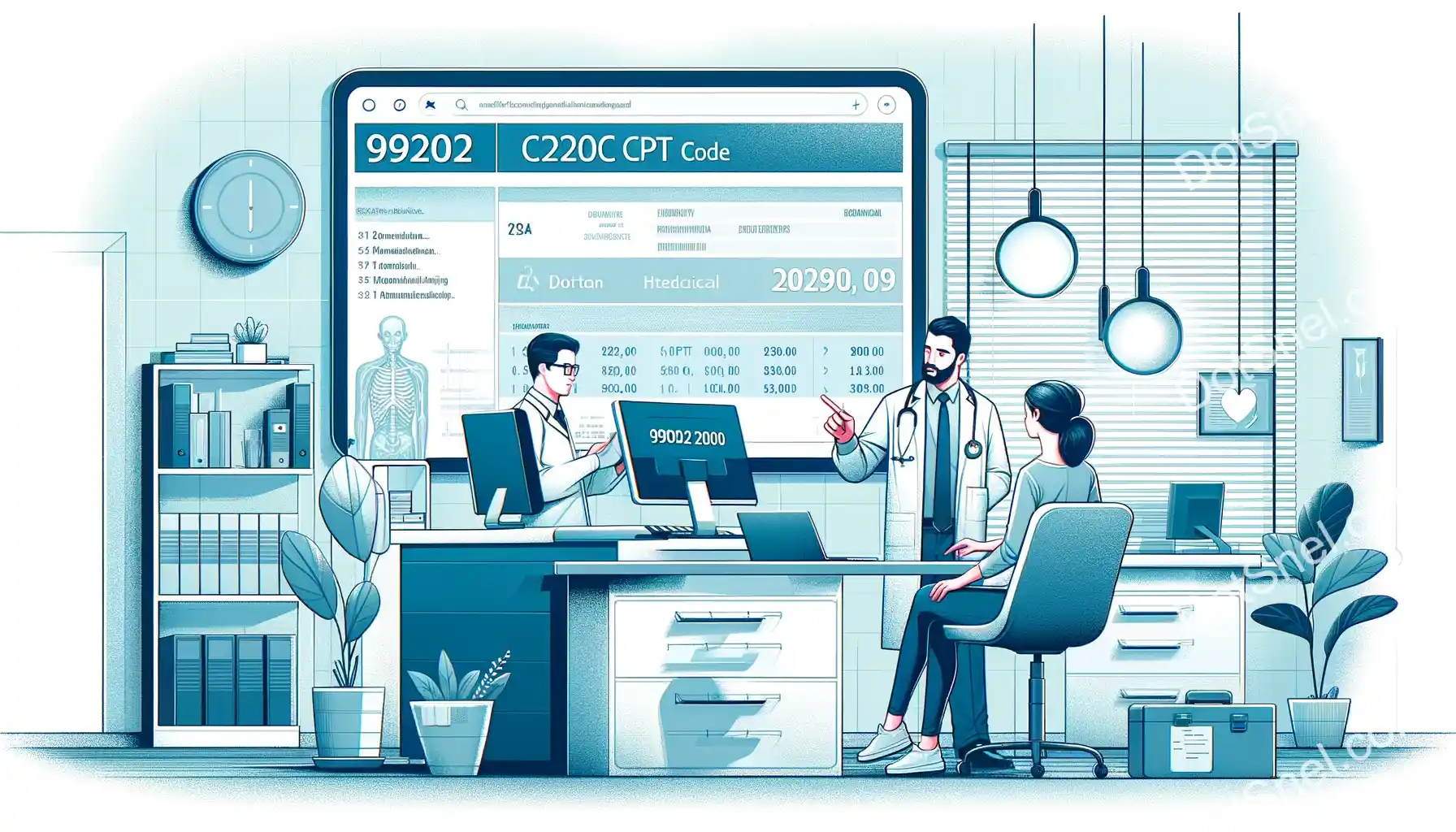92020 CPT Code Reimbursement Explained
Gonioscopy is an eye examination procedure used to evaluate the angle in the eye where the iris meets the cornea. This angle is called the anterior chamber angle or drainage angle. Examining this area is important to check for conditions like glaucoma or other causes of increased eye pressure.
The CPT code for gonioscopy as a separate procedure is 92020.
Key takeaways:
- CPT code 92020 is used to bill for gonioscopy, which examines the eye’s drainage angle.
- It can check for conditions like glaucoma that cause increased eye pressure.
- 92020 is typically billed once whether examining one or both eyes.
- Proper documentation includes noting the performance of gonioscopy and findings.
Understanding When to Use CPT Code 92020
CPT code 92020 is specifically for gonioscopy when performed as a standalone procedure. It is not used if gonioscopy is part of a more comprehensive eye exam.
Here are some details on when 92020 would be the appropriate code:
- Used when examining the anterior chamber drainage angle for detection of abnormalities like closed angles.
- Can check for causes of increased intraocular pressure like glaucoma.
- Performed with a gonioscope, a specialized contact lens.
- Done by ophthalmologists or optometrists.
- Can be indicated for screening or diagnostic purposes.
- Typically performed with eye drops to dilate the pupil for better view.
Other related eye exam codes like 92020 include:
- 92018 – Eye exam with dilation for diagnosis or treatment
- 92004 – Eye exam with dilation for screening purposes
How 92020 is Billed and Documented
When billing 92020, there are a few key considerations:
- Bill once whether gonioscopy is performed on one eye or both eyes.
- Do not use modifier -50 for bilateral billing.
- Document that gonioscopy was performed and relevant findings.
Proper documentation for 92020 should include:
- Note that gonioscopy was performed.
- Findings like appearance of drainage angle.
- Any abnormalities detected like closed angles.
Examples of When 92020 Would Be Used
Here are some examples of appropriate uses of CPT code 92020:
- A patient has elevated eye pressure without a known cause. Gonioscopy is performed to examine the drainage angle and check for closed angle glaucoma.
- As part of a glaucoma evaluation, gonioscopy is performed to classify the stage and anatomy of the patient’s drainage angle.
- A patient with family history of glaucoma undergoes gonioscopy screening to check their drainage angle as a precaution.
- Gonioscopy is performed on a patient with blurred vision to check for potential angle closure causing increased ocular pressure.
Tips for Proper Billing of 92020
Here are some tips for ensuring proper billing practices with CPT code 92020:
- Do not bill 92020 if gonioscopy was part of a more comprehensive eye exam. Only use if it is the sole procedure.
- Use 92020 once per session regardless of unilateral or bilateral gonioscopy.
- Do not use modifier -50 for billing of both eyes.
- Check payer policies for any restrictions on coverage or frequency limitations.
- Ensure proper documentation of the performance of gonioscopy and examination findings.
- Consider using a gonioscopy-specific note template to capture required details.
Frequently Asked Questions about CPT Code 92020
Here are answers to some common questions about this code:
Does 92020 need a modifier? No, you do not use a modifier like -50 with this code. Bill 92020 once per session whether examining one or both eyes.
What is the difference between 92020 and 92133? 92020 is specifically for gonioscopy only while 92133 is for a more extensive glaucoma evaluation that may include gonioscopy.
Can 92020 and 92133 be billed together? No, these codes would not both be billed for the same patient encounter. Only use 92020 for gonioscopy alone.
What diagnosis codes are used with 92020? Common diagnoses include open angle glaucoma (H40.11), closed angle glaucoma (H40.2), ocular hypertension (H40.00), and abnormal ocular pressure (H40.89).
In summary, CPT code 92020 is used to report gonioscopy when performed as a separate procedure. Understanding the correct use of this code along with proper documentation and billing practices is important for accurate coding and reimbursement.

Shahid Maqsood is an experienced writer and journalist with 10+ years in the industry. He is Content writer and Editor , where he writes daily articles covering topics like books, business, news, sports, and more. Shahid holds an MBA from Virtual University of Pakistan and a Master’s in Mass Communications. He is based in Faisalabad, Pakistan.
His work spans multiple platforms like dosttrusty.com and newsbreak.com,Quellpress.com , airriflehunting, and bruitly.com showcasing his versatility and depth. Shahid’s insightful articles reflect his expertise, authoritativeness, and trustworthiness, making him a respected and reliable voice in digital content creation. His contributions engage and inform readers, embodying professionalism and passion in every piece.







